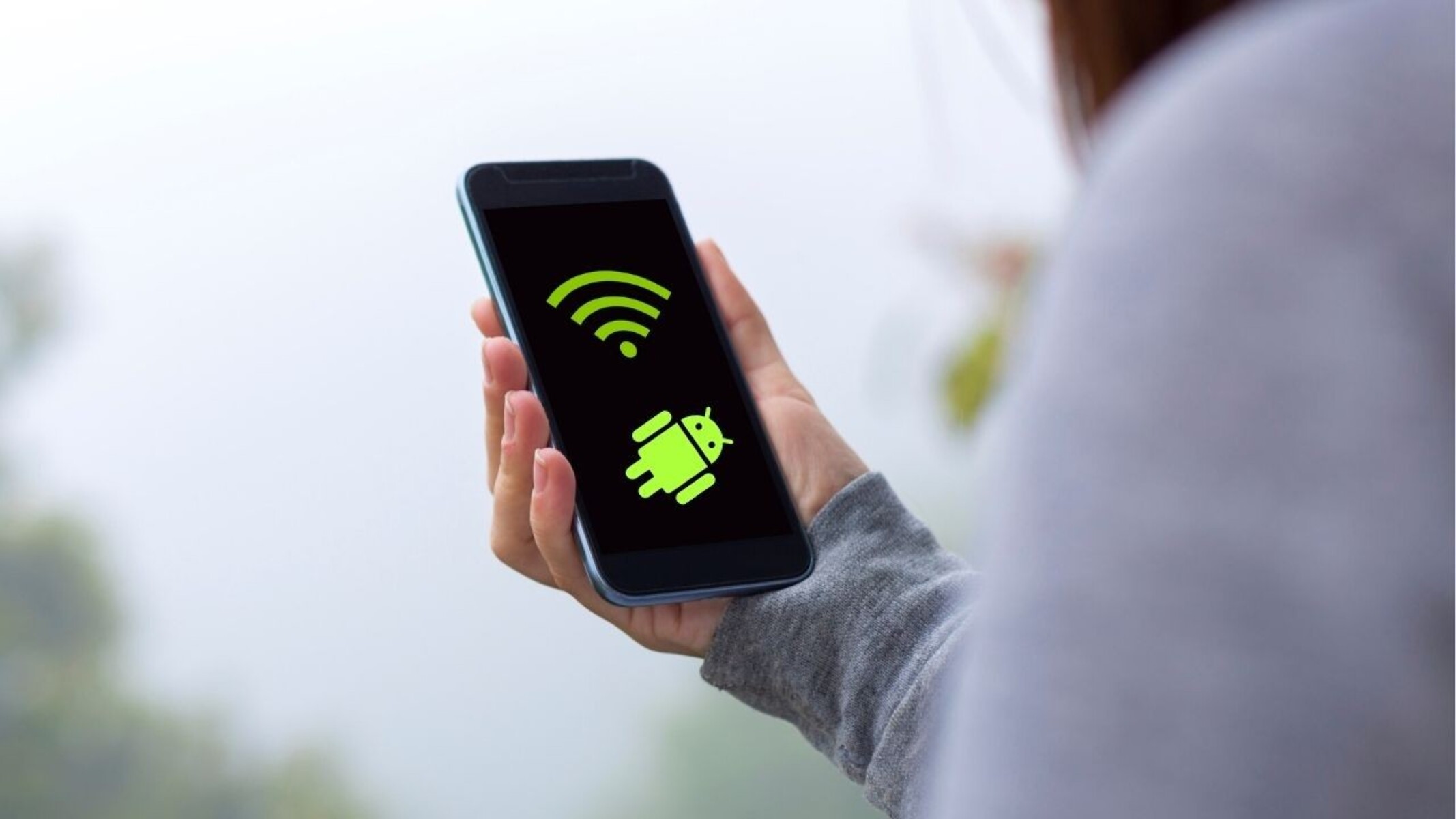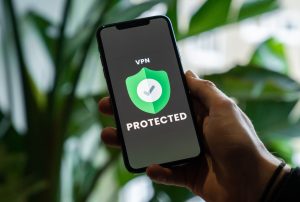What is a Hotspot?
A hotspot is a location or device that provides wireless internet access to other devices. It essentially creates a Wi-Fi network that allows other devices, such as smartphones, laptops, or tablets, to connect to the internet using the hotspot’s internet connection. Hotspots can be found in public places like cafes, airports, and hotels, as well as on mobile devices like smartphones. They are particularly useful when traditional internet access is unavailable, such as in remote areas or when traveling.
On Android devices, the hotspot feature allows users to share their mobile data connection with other devices, effectively turning the smartphone into a portable Wi-Fi router. This feature is especially valuable when users need internet access for their laptops or tablets but are unable to connect to a traditional Wi-Fi network.
Hotspots can be a cost-effective way to stay connected, as they eliminate the need for separate data plans for each device. By using the hotspot feature on an Android device, users can share their existing mobile data connection with other devices, saving them the cost of additional data plans or the hassle of searching for public Wi-Fi networks.
How to Turn on Hotspot on Your Android Device
Enabling the hotspot feature on your Android device is a simple process that allows you to share your mobile data connection with other devices. Here’s a step-by-step guide to turning on the hotspot:
- Accessing Settings: Open the “Settings” app on your Android device. This can typically be found in the app drawer or by swiping down from the top of the screen and tapping the gear icon.
- Locating Network & Internet: Within the settings, look for the “Network & Internet” or “Connections” option, depending on your device’s specific layout.
- Turning on Hotspot: Once in the “Network & Internet” or “Connections” section, locate and tap on the “Hotspot & Tethering” option. Then, select “Wi-Fi hotspot” to access the hotspot settings.
- Configuring Hotspot Settings: In the hotspot settings, you can customize the network name (SSID) and password for your hotspot. This allows you to create a secure connection for other devices to join.
- Activating Hotspot: After configuring the hotspot settings, toggle the switch to enable the hotspot. Your Android device will now begin broadcasting a Wi-Fi signal that other devices can connect to.
Once the hotspot is activated, other devices can connect to it by selecting the network name you specified and entering the password. This straightforward process makes it convenient to share your mobile data connection with laptops, tablets, or other smartphones, providing internet access wherever you go.
It’s important to note that using the hotspot feature may consume additional data from your mobile plan, so it’s advisable to monitor your data usage to avoid exceeding your plan’s limits. Additionally, some carriers may have specific hotspot limitations or require an additional subscription for hotspot usage, so it’s recommended to check with your mobile service provider for any related restrictions or charges.
Using Hotspot for Free Internet Connectivity
Hotspots on Android devices can be utilized to access free internet connectivity in various scenarios, providing a cost-effective means of staying connected. Here are some ways to make the most of hotspot for free internet:
- Utilizing Mobile Data: If your mobile plan includes a generous data allowance, you can leverage the hotspot feature to share your mobile data connection with other devices, effectively providing free internet connectivity to those devices. This is particularly beneficial when traditional Wi-Fi networks are unavailable, such as when traveling or in remote locations.
- Public Wi-Fi Sharing: In some cases, you may come across public Wi-Fi networks that have limited connectivity or require payment for extended usage. By using the hotspot feature on your Android device, you can connect to the public Wi-Fi network and share it with other devices, effectively extending the free internet access to those devices.
- Community Hotspot Sharing: Some communities or neighborhoods may have individuals who are willing to share their internet connection via hotspot with neighbors or community members. By participating in or organizing such initiatives, individuals can benefit from free internet connectivity without incurring additional costs.
It’s important to note that while utilizing hotspot for free internet connectivity can be advantageous, it’s essential to do so responsibly and consider the impact on your mobile data usage. Monitoring data consumption and being mindful of any potential charges or limitations from your mobile service provider is crucial to avoiding unexpected costs.
Furthermore, when connecting to public or shared hotspots, it’s advisable to exercise caution and prioritize security. Using a virtual private network (VPN) can enhance the security of your internet connection when accessing free Wi-Fi networks, helping to safeguard sensitive data and protect your privacy.
By leveraging the hotspot feature on Android devices, individuals can access free internet connectivity in various scenarios, whether it’s through personal mobile data sharing, public Wi-Fi sharing, or community initiatives. This flexibility and accessibility contribute to the convenience of staying connected without relying solely on traditional Wi-Fi networks or incurring additional expenses.
Tips for Optimizing Hotspot Usage
When using the hotspot feature on your Android device, optimizing its usage can enhance connectivity, efficiency, and security. Here are some valuable tips to make the most of your hotspot:
- Monitor Data Usage: Keep track of your data consumption when using the hotspot to avoid exceeding your mobile plan’s limits. Utilize data monitoring tools or features provided by your device to stay informed about data usage and set alerts for reaching specific thresholds.
- Limit Background Data: To conserve data and optimize hotspot usage, consider restricting background data usage on connected devices. This can help prioritize essential tasks and minimize unnecessary data consumption, especially when multiple devices are connected to the hotspot.
- Use Data-Saving Features: Many Android devices offer data-saving features that can be enabled to reduce data usage while maintaining essential functionality. These features may include data compression, low-data modes for apps, and adaptive resolution settings for streaming content.
- Optimize Wi-Fi Signal: Position your Android device in an optimal location to ensure a strong and stable Wi-Fi signal for the hotspot. Avoid physical obstructions and interference that may hinder signal strength, and consider using Wi-Fi extenders or signal boosters if necessary.
- Enable Power-Saving Mode: Activating power-saving mode on your Android device can help conserve battery life while using the hotspot, extending the duration of connectivity, especially in situations where power sources are limited.
- Implement Security Measures: Protect your hotspot and connected devices by using strong, unique passwords and enabling encryption for the Wi-Fi network. Additionally, consider using a virtual private network (VPN) to enhance security and privacy when accessing the internet through the hotspot.
- Share Selectively: When sharing your hotspot with others, be mindful of the number of connected devices and the impact on data usage. Prioritize essential connectivity for tasks that require internet access, and consider limiting the number of connected devices to optimize performance.
By implementing these tips, users can optimize their hotspot usage on Android devices, ensuring efficient data management, reliable connectivity, and enhanced security. These strategies contribute to a more seamless and cost-effective experience when leveraging the hotspot feature for internet connectivity.
Security Considerations for Using Hotspot
When utilizing the hotspot feature on an Android device, it’s essential to prioritize security to safeguard sensitive data and ensure a secure internet connection. Here are key considerations for maintaining security when using a hotspot:
- Secure Password Protection: When setting up a hotspot, ensure that a strong, unique password is used to prevent unauthorized access. Avoid using easily guessable passwords and consider incorporating a combination of letters, numbers, and special characters to enhance security.
- Encryption Protocols: Enable WPA2 (Wi-Fi Protected Access 2) encryption for the hotspot to encrypt data transmitted between connected devices, reducing the risk of interception by unauthorized users. This encryption protocol provides a higher level of security compared to older standards.
- Use of Virtual Private Network (VPN): Implementing a VPN on both the Android device creating the hotspot and the connected devices can significantly enhance security by creating a secure, encrypted tunnel for internet traffic. A VPN helps protect sensitive information and privacy, especially when accessing public or shared hotspots.
- Awareness of Phishing Risks: Exercise caution when accessing sensitive accounts or providing personal information while connected to a hotspot. Be vigilant against phishing attempts, and ensure that websites and online services accessed through the hotspot are legitimate and secure.
- Regular Software Updates: Keep the Android device and all connected devices up to date with the latest software and security patches. Regular updates help address vulnerabilities and strengthen the overall security posture of the devices, reducing the risk of exploitation by malicious actors.
- Limiting Device Visibility: Configure the hotspot settings to make the network invisible or “hidden” to unauthorized devices. This can prevent unauthorized attempts to connect to the hotspot and minimize the risk of unauthorized access.
- Monitoring Connected Devices: Regularly review the list of connected devices to the hotspot and ensure that only authorized devices are accessing the network. Remove any unfamiliar or unauthorized devices to prevent potential security breaches.
By incorporating these security considerations into hotspot usage, individuals can mitigate risks and enhance the overall security of their internet connectivity. Prioritizing secure practices and leveraging available security features contribute to a safer and more reliable hotspot experience on Android devices.


